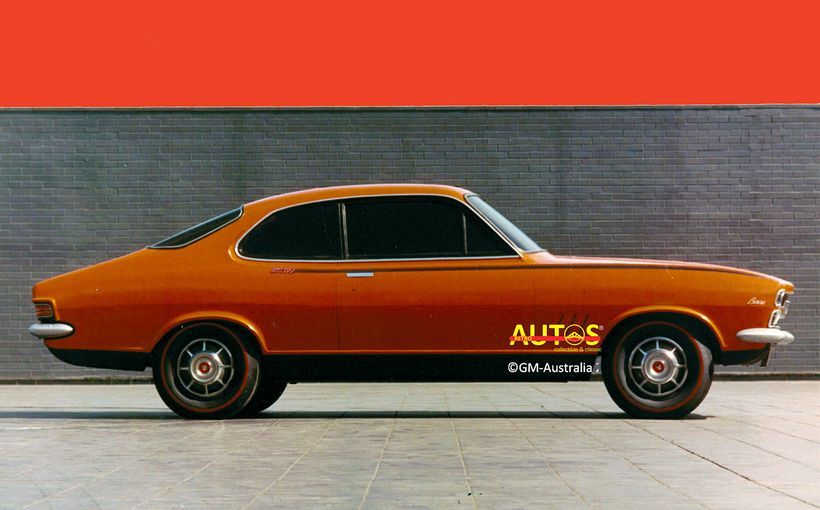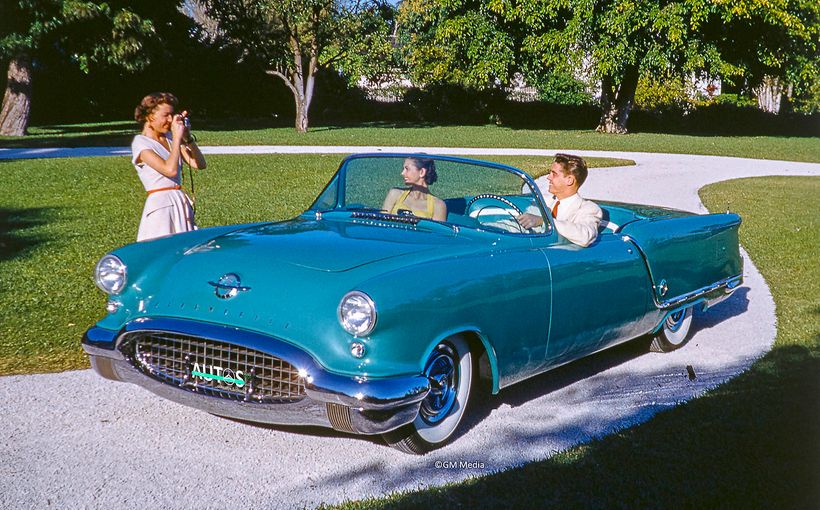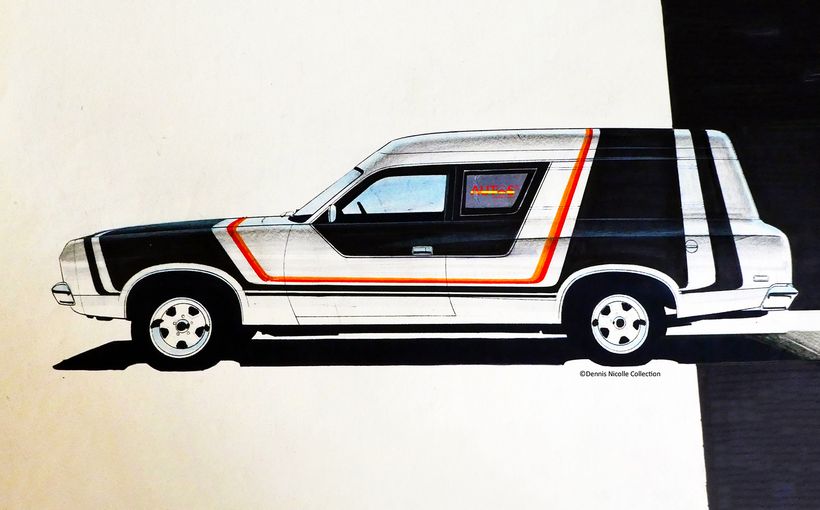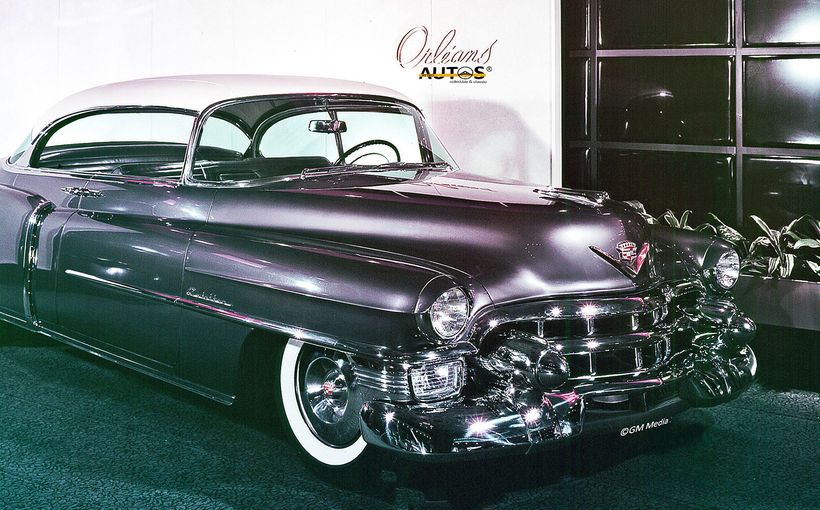More Grilles you NEVER saw: Holden, Valiant, Vauxhall, Mustang, Dodge, Thunderbird, Mercedes, Chevrolet, Chrysler and more

This is the second instalment of a series devoted to what is arguably the most important styling feature of an automobile: Grilles.
Grilles are the face of a vehicle. They need to be distinctive enough to ensure a car is immediately identifiable but not so “distinctive” that they become objects of ridicule.
Many marques, and design bosses, adhere to a consistent theme for their grilles, evolving them as the years progress. Mercedes Benz, Rolls-Royce/Bentley, Ford’s LTD (from the P6 model onwards) and BMW are stand out examples of this evolutionary approach.

Other marques boast of a renewed grille with almost every new model. Holden was in this category and so was the Falcon. Though, in more recent years, the immense cost of such changes and the overarching need to ensure front impact safety has meant that the evolution dominates.
Each approach has its merits and limitations. Consistency ensures brand identity is maintained but sets boundaries for designers. Frequent renewal enables innovation but elevates the risk that something ugly escapes onto the street. Which appeals to you the most?
One thing is for certain, consistency can’t be hurried. It has taken Kia almost 15 years to establish its “tiger-nose” theme. It was first seen at the 2007 Frankfurt Motor Show, when Kia unveiled its yellow Kee Sports Coupe concept. Still looking strikingly new 15 years later, it was shaped under the direction of newly appointed design chief, Peter Schreyer.
“When I started at KIA, it was important that we established an identity…and the tiger nose grille is a signature you can recognise on (Kia) cars everywhere.”



Creating a grille is not easy these days. Designers have to meet all of the safety and design regulations in every market in which the car is sold. No longer do they have the freedom to do let their imaginations run free. Safety outranks styling in the 21st century. Not like in the “good old days” when styling was given the priority.
Remember the 1958 Buick’s grille? It even had a name: the Fashion-Aire Dynastar. The 160 chrome-plated squares were shaped to reflect the maximum amount of light and neon illumination, as this luxo-barge cruised the highways and boulevards of the USA. The 1950 Studebaker, 1956 FE Holden and early 1970s Toyota Crown are more examples of the styling freedoms of a bygone era.




In this second instalment of Grilles You NEVER Saw, I take a look at more grilles that never were and compare them with what ended up on the street. I will leave it up to you to decide if the right decisions were made.
1959 Chevrolet
When GM’s stylists first saw the 1957 Chrysler models, they were aghast. All manner of outlandish styling ideas were developed in an effort to regain GM’s reputation for styling leadership. In the first part of this series, I showcased some of the strange ideas for the ’59 Chevrolet. At the same time, more conservative proposals were being developed, like this one. In the end, a semi-conservative result was approved.


1963 EH Holden
While busy refining the EJ Holden in the USA GM designer Stan Parker was also assigned the EH styling project. This photo was taken on 31st October 1961, two years prior to the car’s launch. The thin bars and “floating” individual letters spelling HOLDEN would have been complicated and expensive to assemble. The production version was no less impressive but reflected Holden’s need to keep costs low. The HOLDEN name is stamped into part of the grille’s metal.


1962 Dodge
The 1962 Dodge was another unfortunate outcome of Chrysler’s ill-fated downsizing of its full-sized cars. The slanted dual headlight arrangement did make it into production, but not in the way it was originally envisaged.


1963 Mercedes 600
When Mercedes’ stylists were finalising the large 600 sedan, aka W100, they seriously considered this combination of horizontal dual head lights and a vertical grille. In the end the vertical theme was chosen for headlights.


1964 Ford Mustang
Here are three of at least 12 full sized alternatives for the Mustang. Would any have been as iconic today as the Mustang’s grille is now? I doubt it.




1971 HQ Holden
Three tape drawing alternatives for the HQ Holden. The recessed grille was a GM theme at the time and appeared on the 1971 Camaro and Vega. The HQ boasted the deepest recess.




1975 AMC Hornet
Famed industrial and automotive designer Brooks Stevens was asked to submit ideas for a re-fresh of AMC’s Hornet. Although he gave the car a new look and his suggested grilles enhanced its appeal, his proposals never went beyond the sketch stage. AMC did not have the money to spend on such extensive changes for its entry level economy car.



1967 Vauxhall Viva
The original idea for the Viva called for a prominent body coloured divider that integrated with the bonnet and a metal panel under the grille. The manufacturing managers would have made it quite clear how difficult and costly it would be to ensure alignment of this proposal on a fast-moving assembly line. You can see the compromise in the final product.


1961-63 Ford Thunderbird
I’m pleased this proposal for the 1962 or 1963 T-Bird update remained in the styling studio. Full marks, however, for daring to be different.


1956 Chevrolet
Work on the 1956 Chevrolet grille was well advanced by mid-1954 as these two alternatives demonstrate.



1953 FJ Holden
Many designs were sketched for the FJ Holden grille. The previous instalment showed four alternatives. Here are two more and a wall of sketches.




1951 Kaiser
Integrating the grille into the bumper bar has a long history. Virgil Exner patented a design in 1938, when he was working at GM. Kaiser-Frazer contracted Brooks Stevens to explore the idea for its 1951 range. Although Stevens’ proposals were not selected, a version did make it into production.



1971 Chrysler by Chrysler
Chrysler’s design boss, Elwood Engel, embraced the integration of the grille and bumper bar in the late 1960s and early 1970s with some spectacular results. It was considered for the VH Valiant and then, because of costs, applied only to the long wheelbase CH Chrysler by Chrysler sedan and coupe. Although the hidden headlights were deleted, I reckon the CH Chrysler grille is the most impressive of the local luxury limos, when compared to the HQ Statesman and ZF Fairlane. The “115” and “111” on the number plates refer to the wheelbase length in inches.




There will be more Grilles You NEVER Saw in the future. A special thanks to John Kyros at GM Heritage, David Booker at Vauxpedia (the world’s best Vauxhall website) and those who I quoted for their assistance. Retroautos is published and written with passion and with pride. Reproducing this content in any format is prohibited. Here’s a link to the previous instalment of Grilles You Never Saw.









